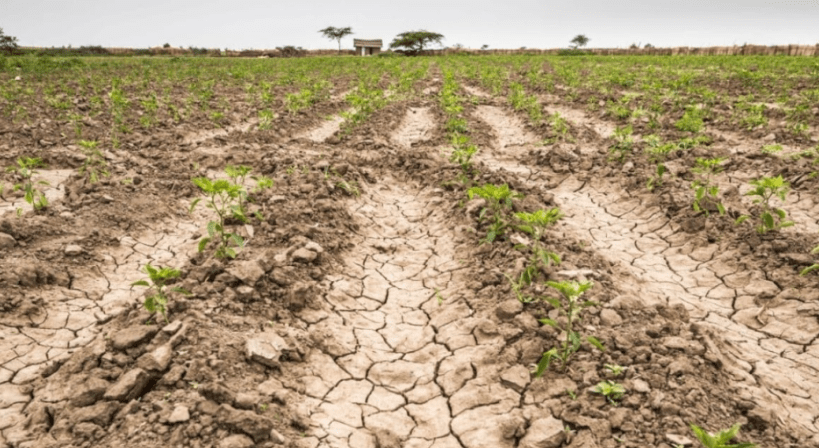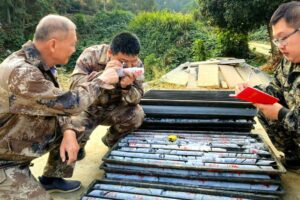
For years, Argentine agriculture, a key pillar of the country’s economy, has faced the constant challenge of climate change. In particular, drought has become a recurring phenomenon that threatens agricultural production in vast regions of the country. The lack of rainfall, intensified by global climate change, generates devastating impacts not only on crops, but also on productive systems and rural economies that depend on agricultural activity.
This phenomenon affects both small producers and large agro-industrial conglomerates, generating a critical situation that triggers a chain reaction throughout the country’s entire productive structure. This article aims to analyze in depth the implications of drought on Argentine agriculture, considering both the direct effects on crops and the economic, social and environmental consequences that arise from the lack of water.
Direct impact on crops
When drought sets in in the countryside, the first visible effect is the impact on the growth and development of crops. Most of the plants that form part of the Argentine agricultural system, such as corn, soybeans and wheat, depend on a regular rainfall regime for their growth. Under normal conditions, rain guarantees the necessary humidity for seeds to germinate and plants to complete their development cycle. However, when rainfall is reduced or disappears completely, the lack of water slows the growth of plants and, in many cases, causes their death.
Drought not only affects the volume of production, but also its quality. Crops that survive water stress conditions often show poor development, which directly impacts the final yield per hectare. In the case of soybeans, for example, the lack of water during critical stages of growth can significantly reduce the quantity and quality of grains, decreasing their commercial value.
In turn, the lack of rainfall creates an environment more conducive to the appearance of pests and diseases. In drought conditions, many of the pests that affect crops find a favorable environment for their reproduction and spread, which further aggravates the situation of producers, who must face the loss of yield and the increase in costs associated with managing these adversities.
Economic consequences
Agriculture represents one of the main sources of income for the Argentine economy, especially through exports. The drought, by reducing production volumes, has a direct impact on the country’s trade balance. Fewer tons of soybeans, corn or wheat mean less foreign currency entering the national coffers, which can aggravate structural problems, such as the lack of foreign currency reserves.
For producers, drought translates into a significant loss of income. Unable to harvest the expected quantities, their profit margins are drastically reduced, and in some cases, losses can be so significant that they jeopardize the continuity of their farms. This particularly affects small producers, who often have fewer resources to cope with prolonged periods of adverse weather conditions. The lack of income creates a vicious circle: producers are unable to invest in technologies that allow them to improve water use efficiency or implement mitigation measures, which makes them even more vulnerable to future droughts.
In addition to the drop in direct production, prolonged droughts also impact industries associated with agriculture, such as transport, agricultural machinery and inputs. As the volume of transported products is reduced, the entire value chain linked to the agricultural sector is affected, generating a contraction in regional and, in some cases, national economic activity.
Social impact and rural migration
Drought not only affects crops and producers’ incomes, but also has a profound impact on rural communities. Agriculture is a key source of employment in many regions of the country, and when agricultural production collapses, so do jobs linked to this activity. Lack of employment and reduced income lead many rural families to situations of vulnerability, increasing levels of poverty and social exclusion.
In many cases, prolonged droughts generate migration movements. The impossibility of continuing productive activities in the countryside forces many people to abandon their lands and seek new opportunities in the cities, which contributes to the depopulation of rural areas. This phenomenon has a profound impact on the social fabric of rural communities, which lose population, knowledge and culture. In turn, migration to cities generates additional pressure on urban services, such as housing, employment and education.
Environmental effects
The impact of drought on agricultural production is not limited to economic and social consequences. Alterations in water cycles also have significant implications for the environment. The lack of water affects soils, which lose their fertility due to a reduction in the amount of organic matter and microorganisms. Dry and eroded soil is more susceptible to desertification, a process that threatens large areas of agricultural land in Argentina.
Drought also affects surrounding ecosystems. Water sources such as rivers and lakes are affected by the lack of rainfall, which creates imbalances in local fauna and flora. The reduction in water resources also affects domestic animals and livestock, another crucial activity in the Argentine agricultural system. In many regions, the lack of water to drink and pastures to feed animals causes a decrease in meat and milk production, which further aggravates the crisis in the sector.
Producers’ response to drought
Faced with the constant threat of drought, Argentine producers have developed a series of strategies to mitigate its effects. Firstly, the adoption of technologies that allow for more efficient use of water has been promoted. Drip irrigation, for example, has become a fundamental tool to guarantee production in areas where rainfall is scarce. This technique allows water to be applied directly to the roots of plants, minimising losses through evaporation and maximising the use of the resource.

Another important approach has been crop diversification. Producers, aware of the vulnerability of certain species to lack of water, have opted to incorporate new varieties that are more resistant to drought. These varieties, developed through biotechnology and genetic improvement, offer greater tolerance to water stress, allowing them to maintain acceptable yields under adverse conditions.
However, despite these advances, drought remains a difficult threat to control. Smaller producers, who do not have the resources to invest in irrigation technologies or improved seeds, are the most vulnerable to losses. In this context, the role of the State and public policies becomes crucial to guarantee the sustainability of the agricultural sector in times of climate crisis.

Grupo Ruiz is a business conglomerate based in the province of Tucumán, Argentina. Founded in 1994 with the creation of Paramérica SA, in a decade it has positioned itself as a world leader in the export of black beans and lemons.
Source: https://reporteasia.com/economia/2024/09/10/impacto-sequia-produccion-agricola-argentina/

